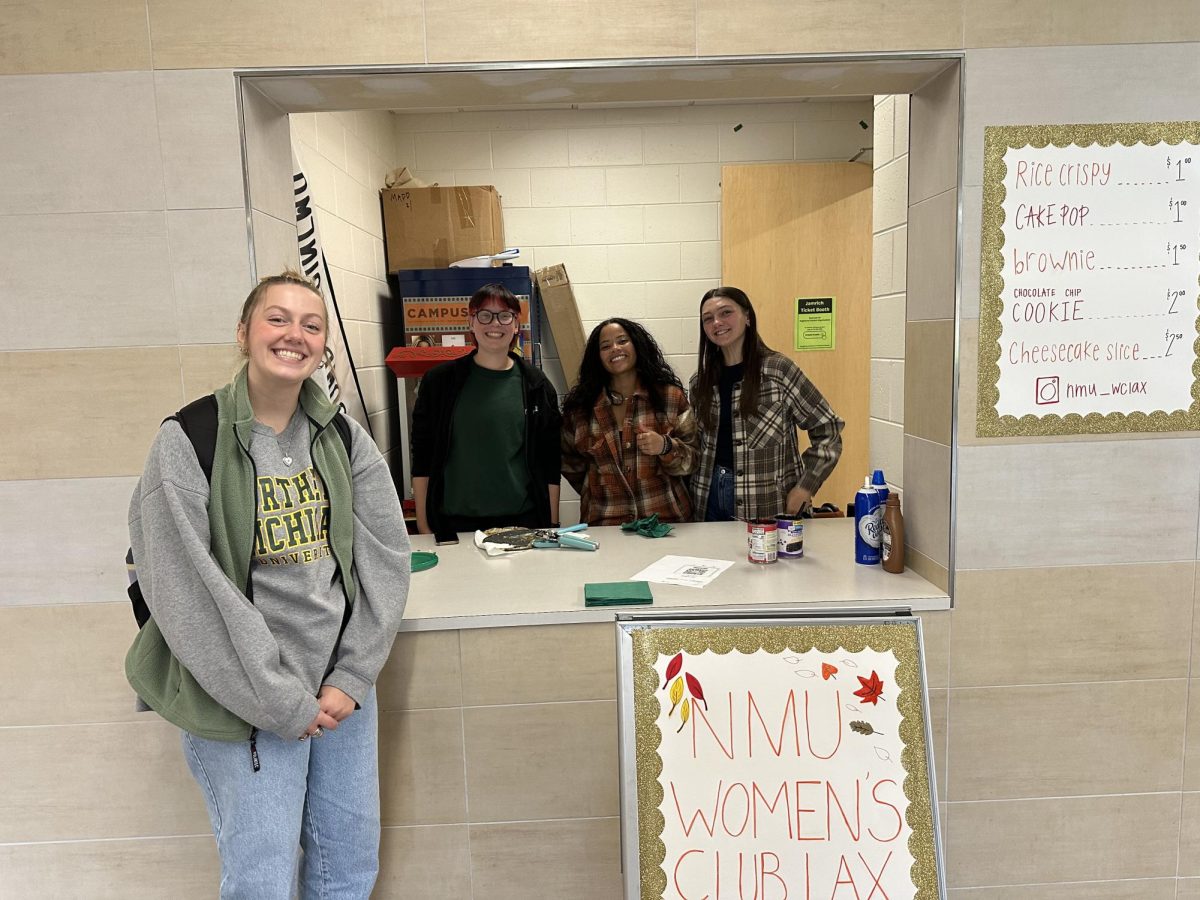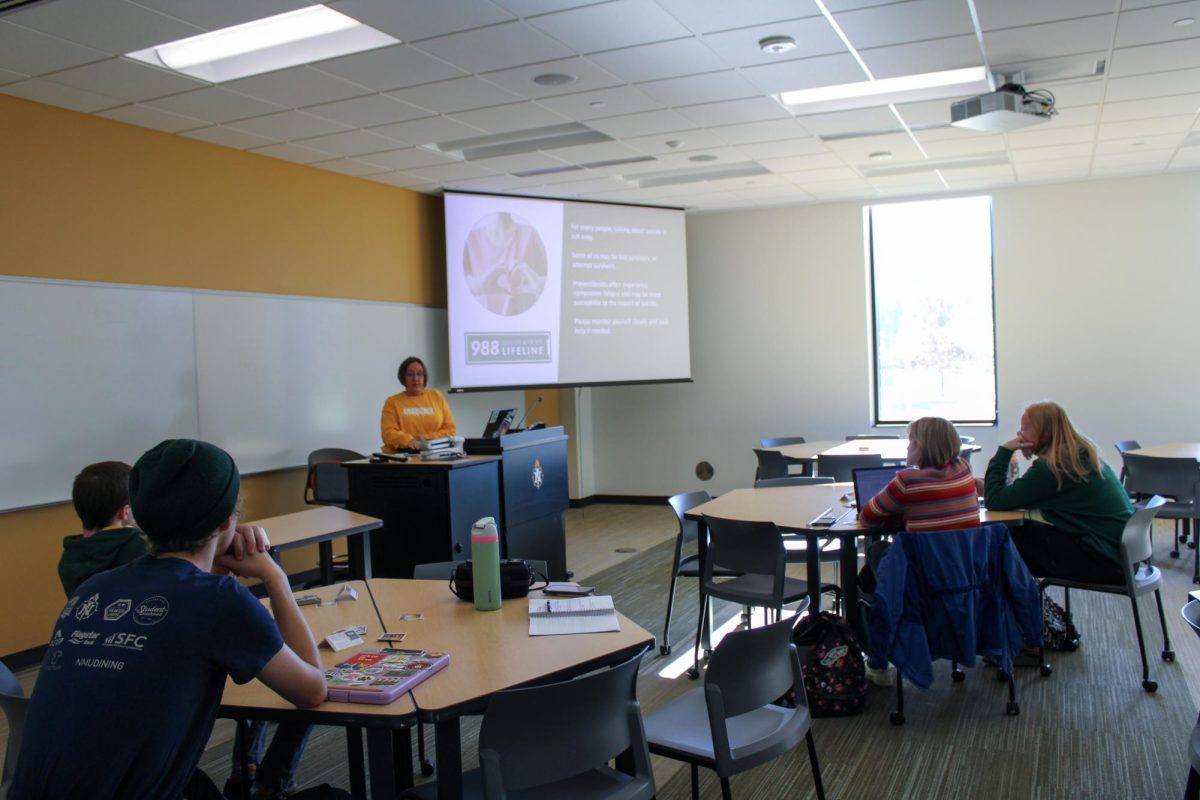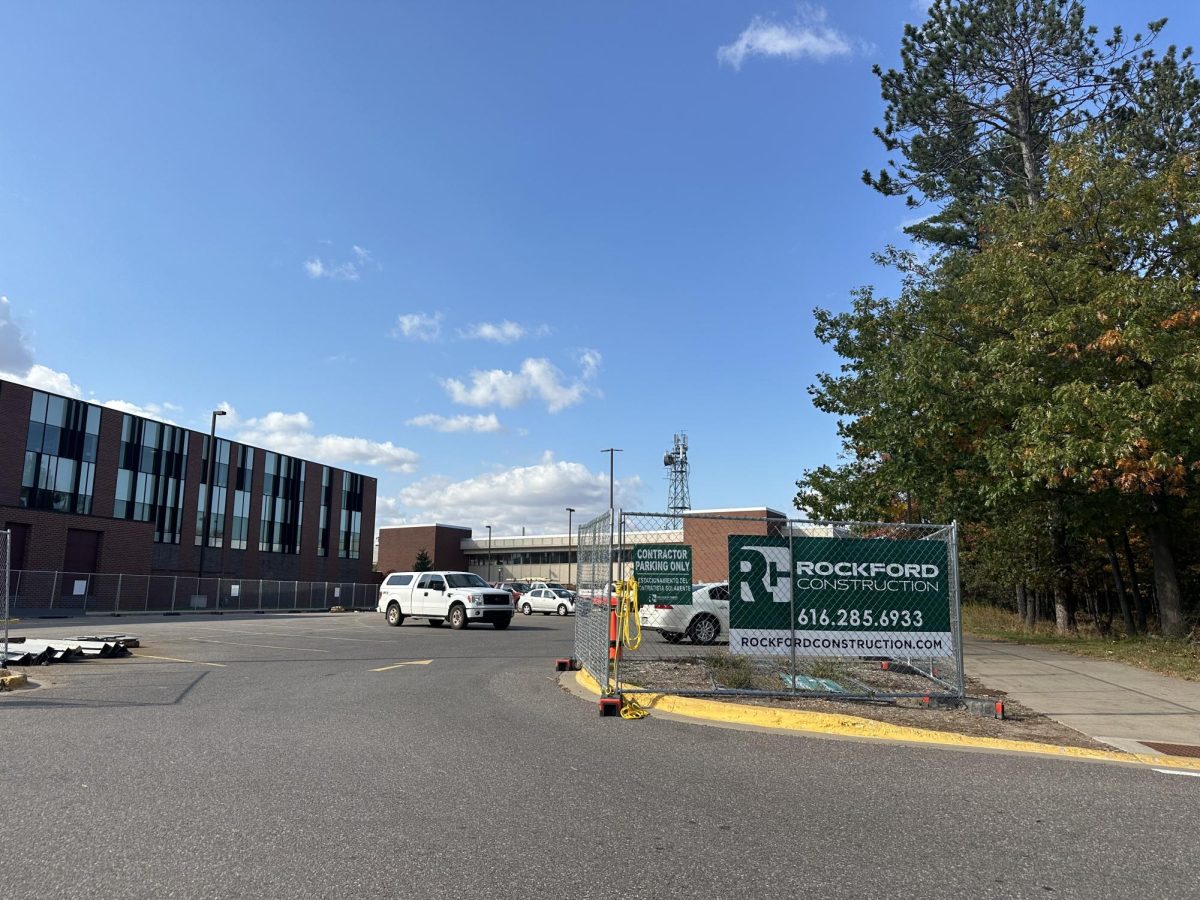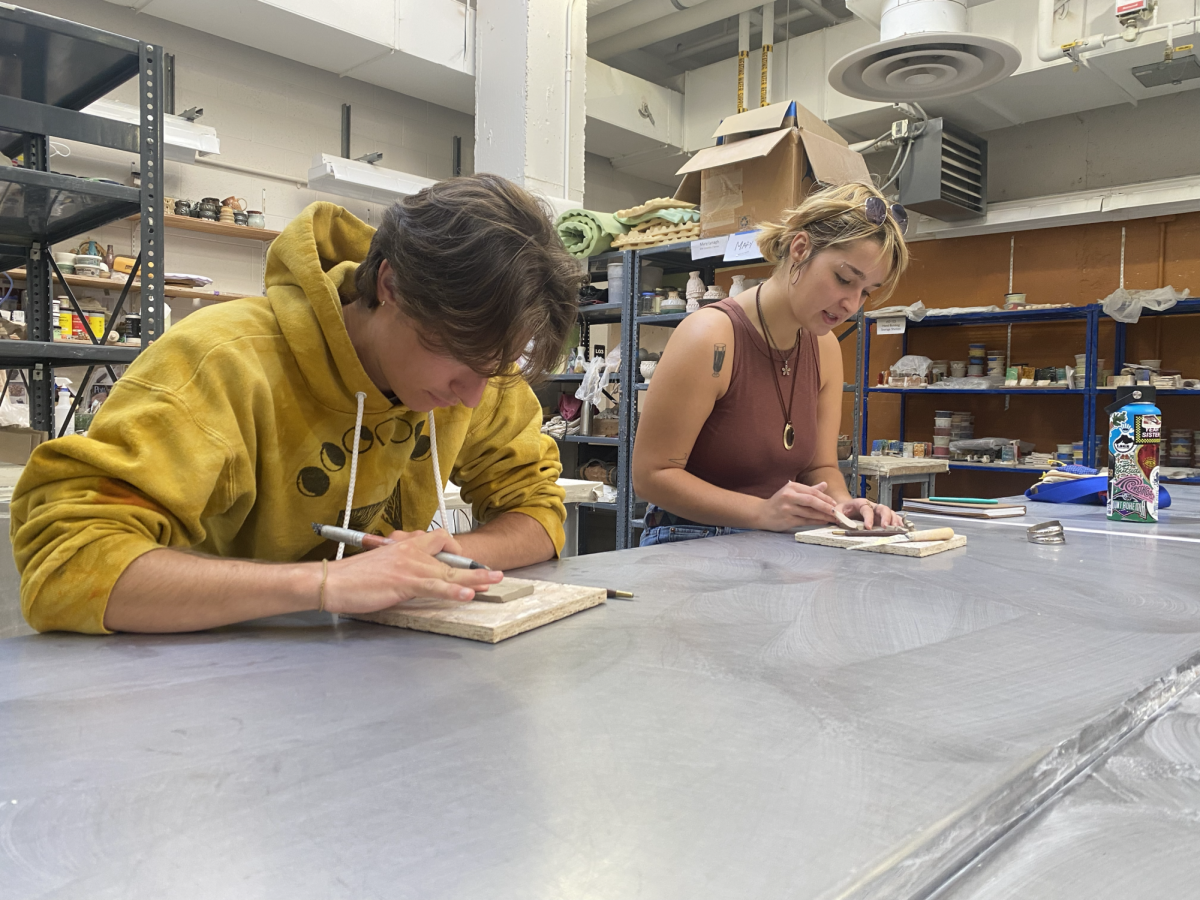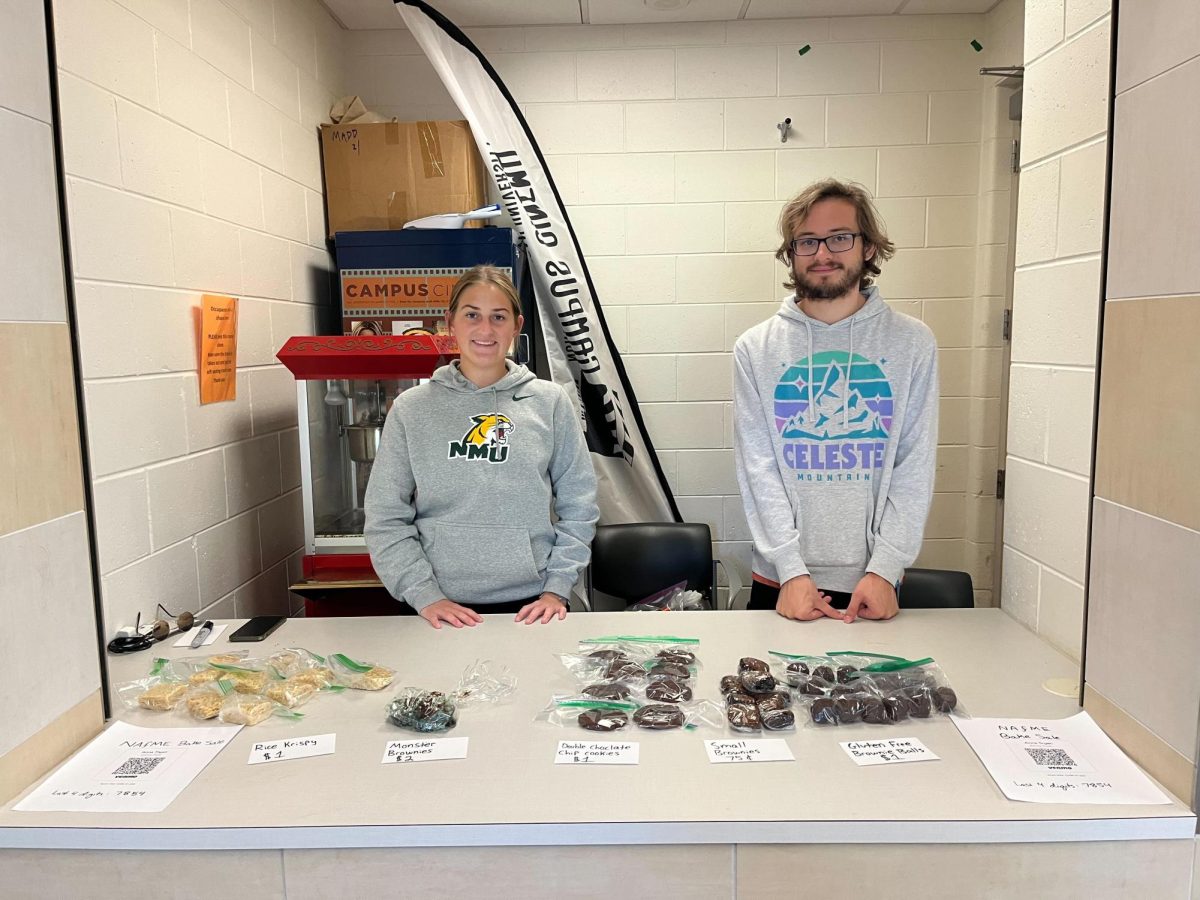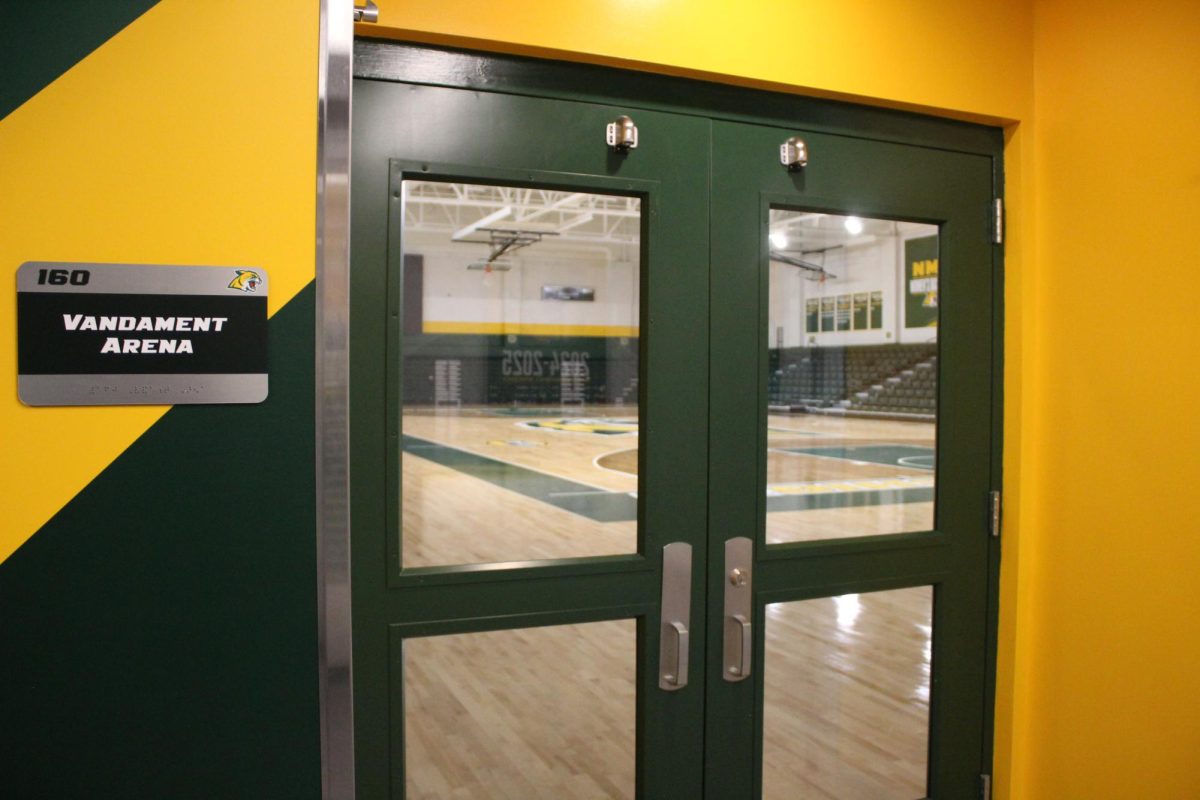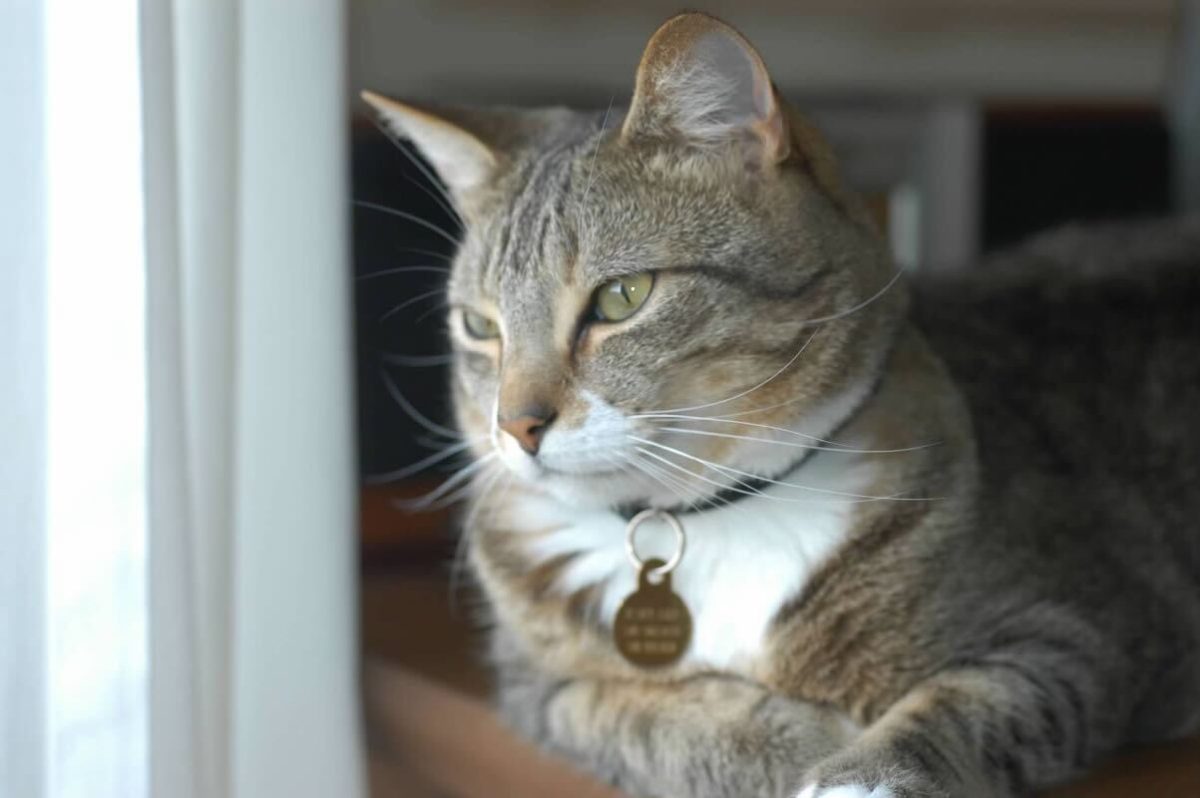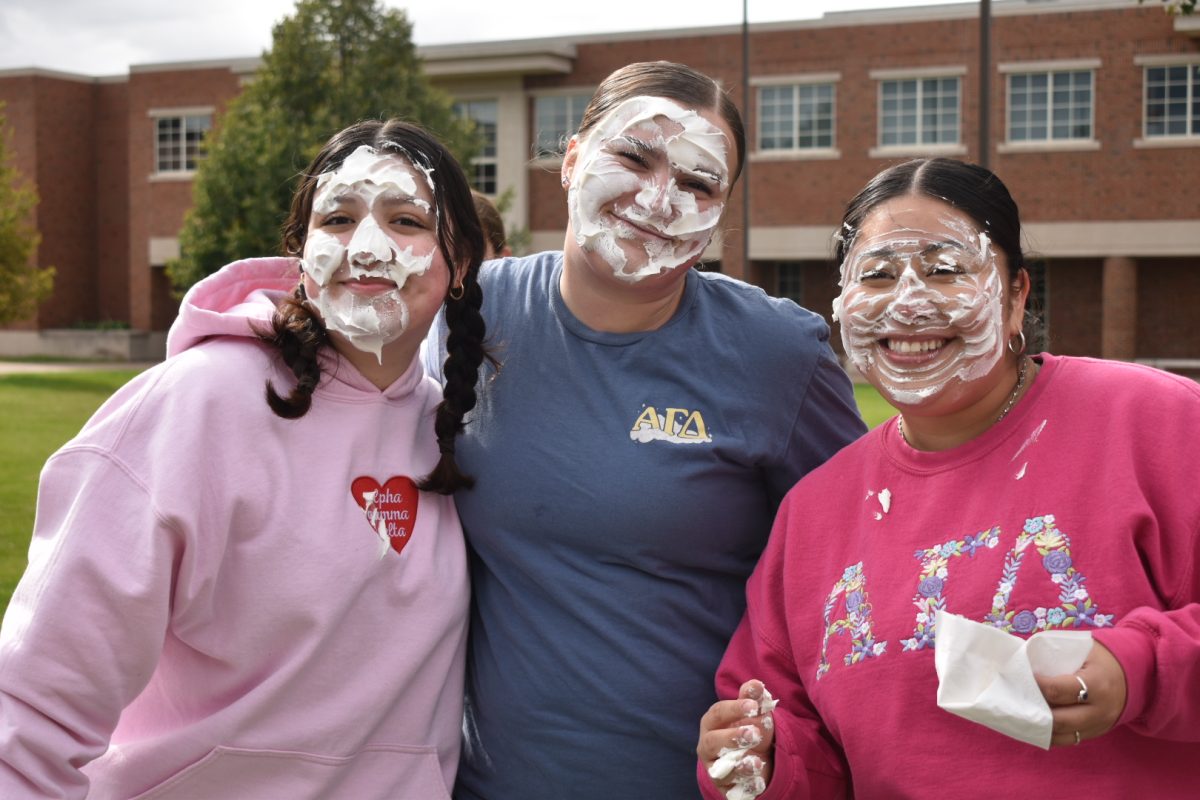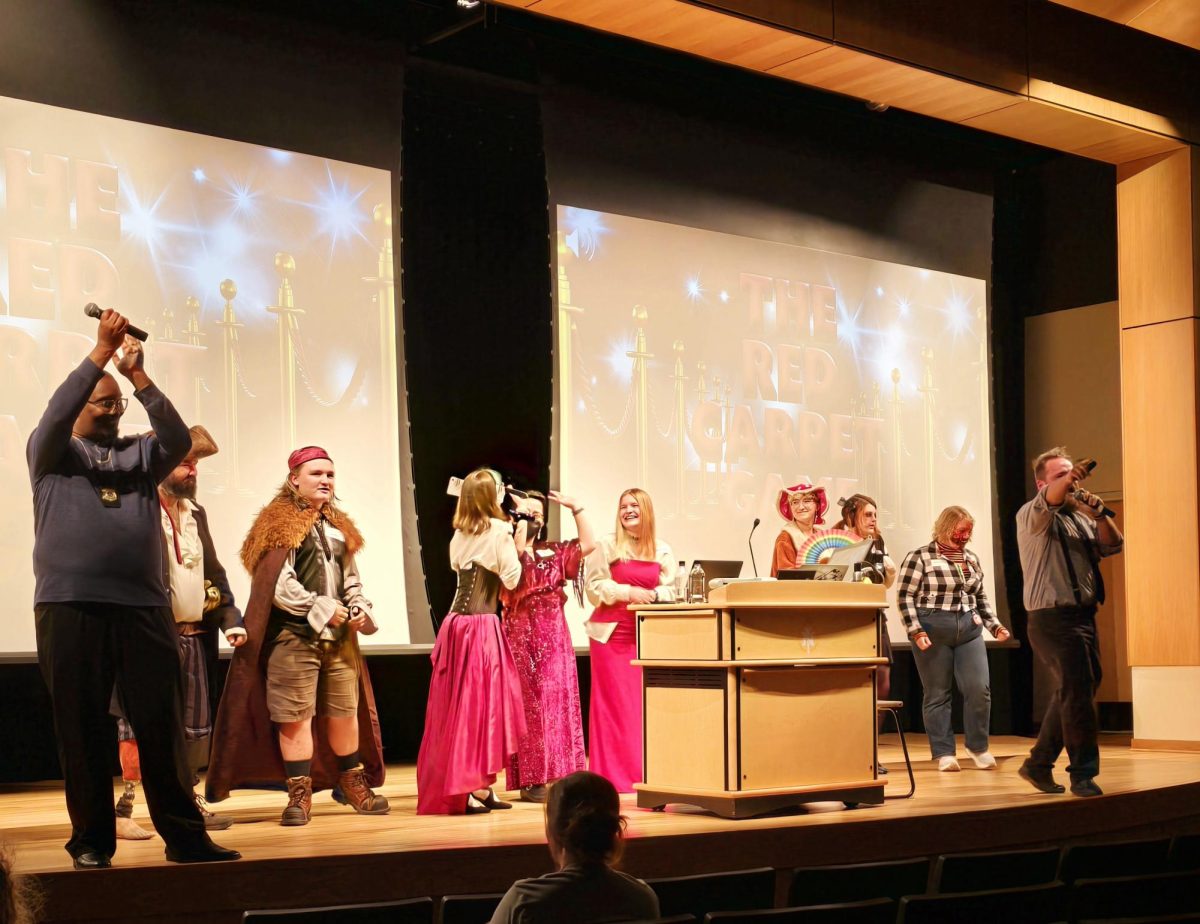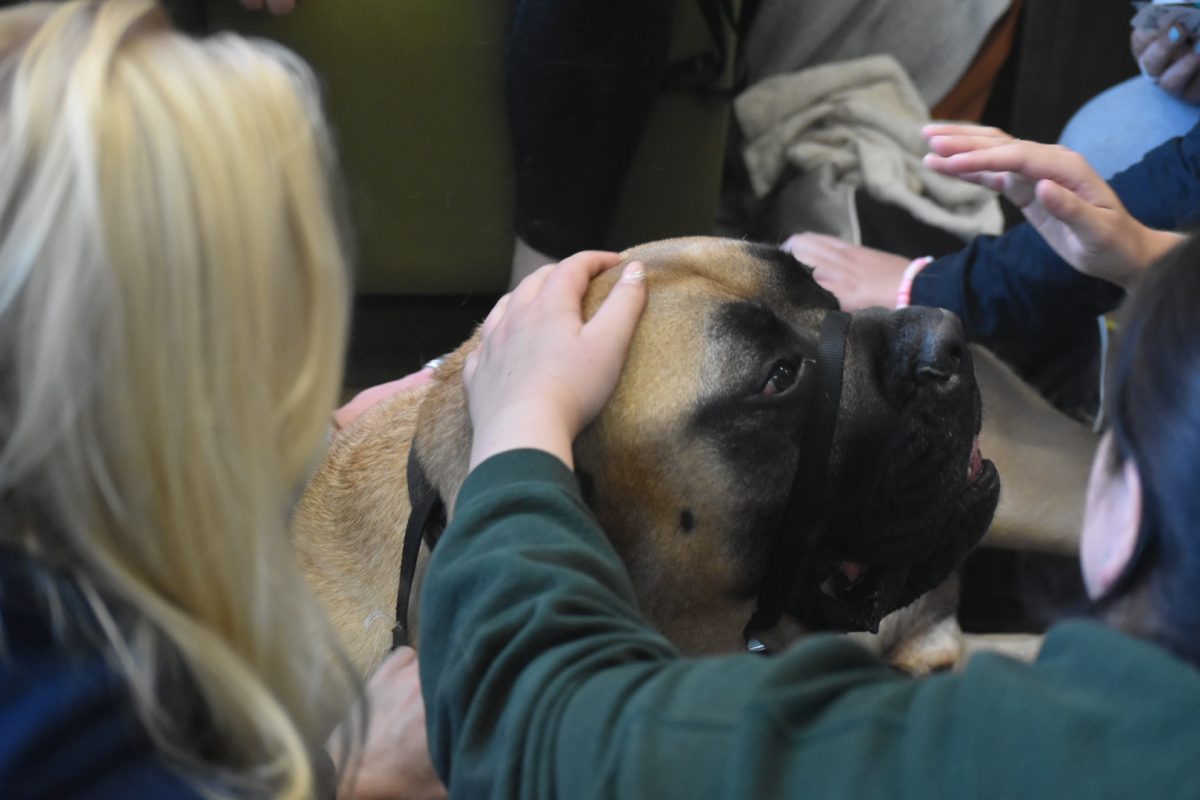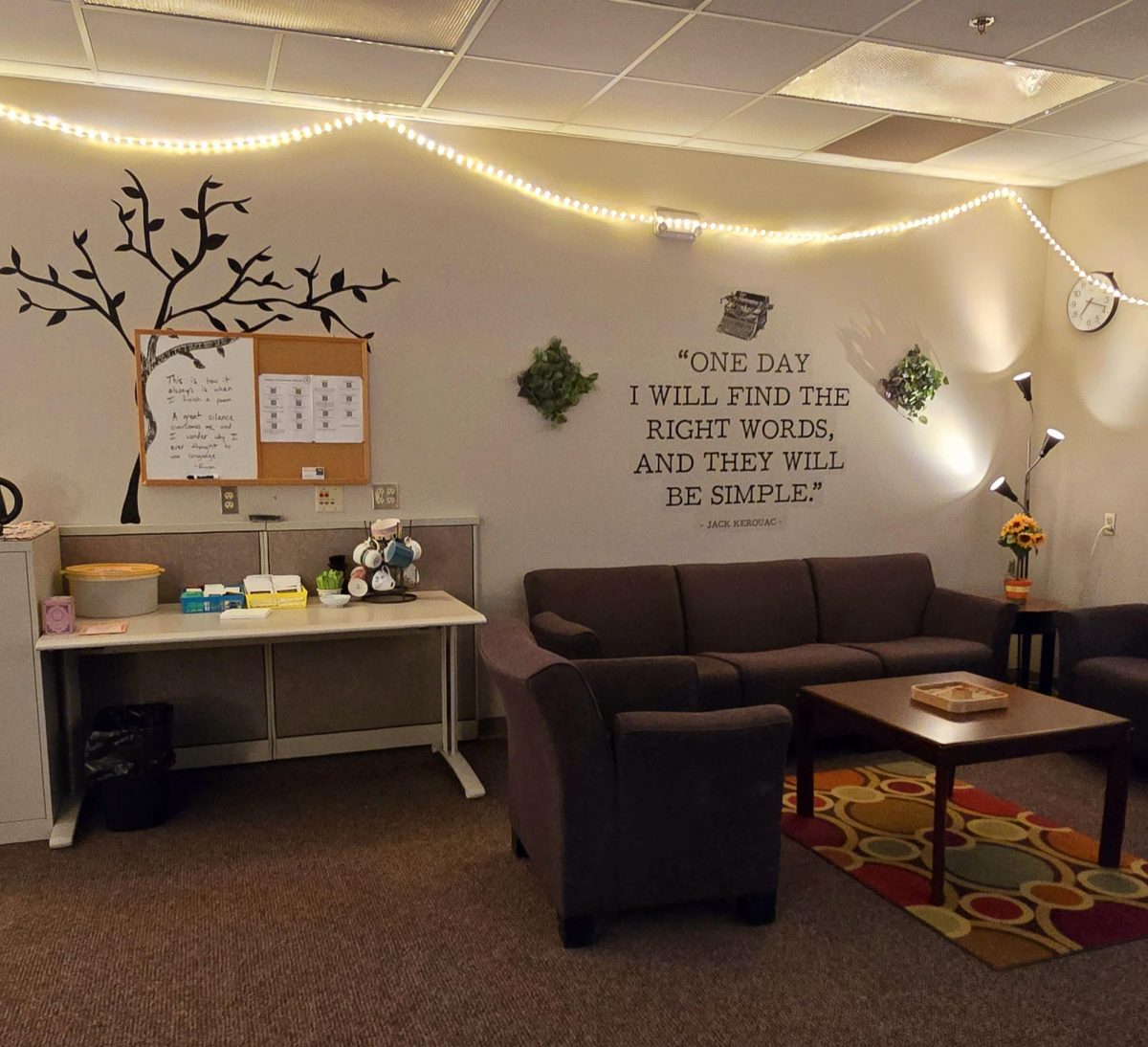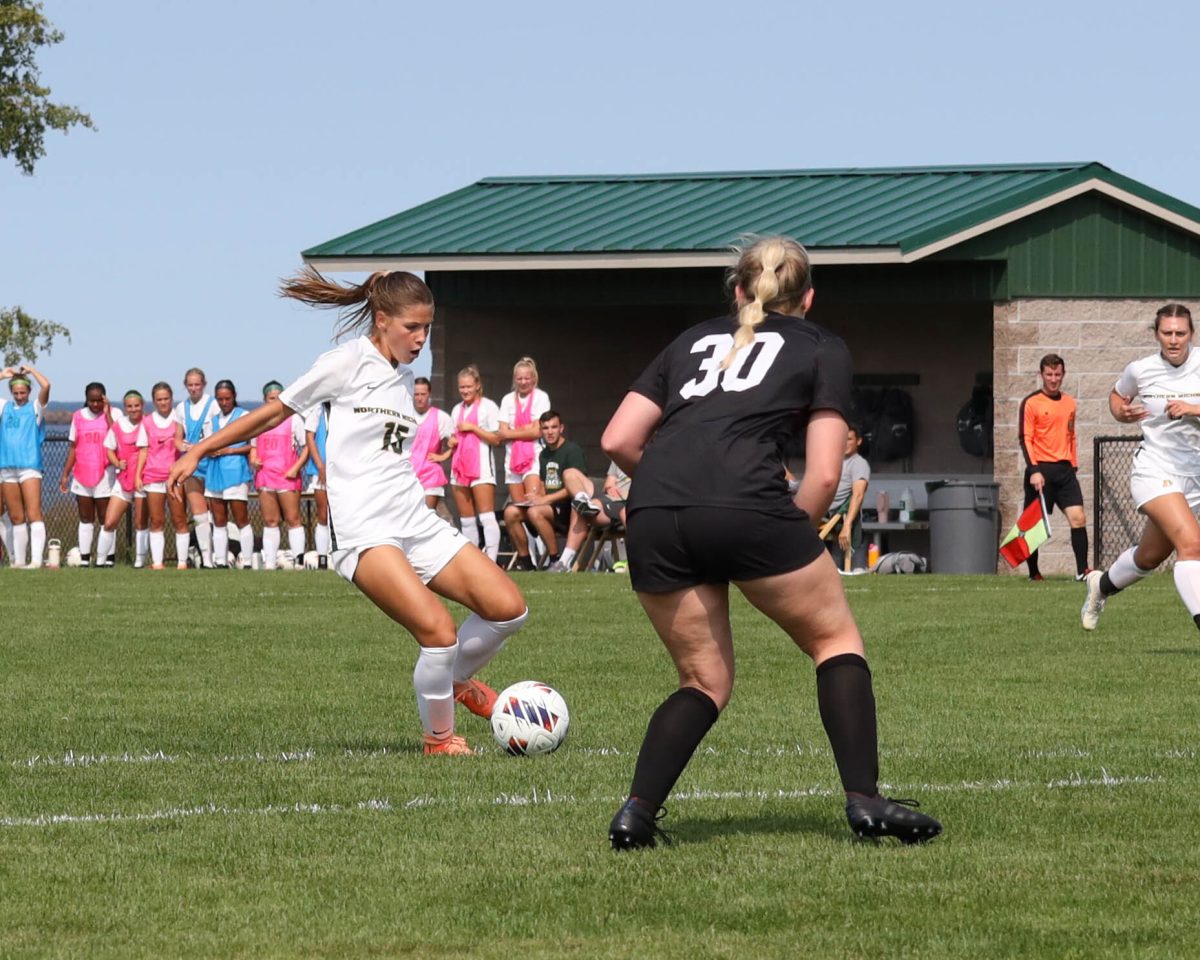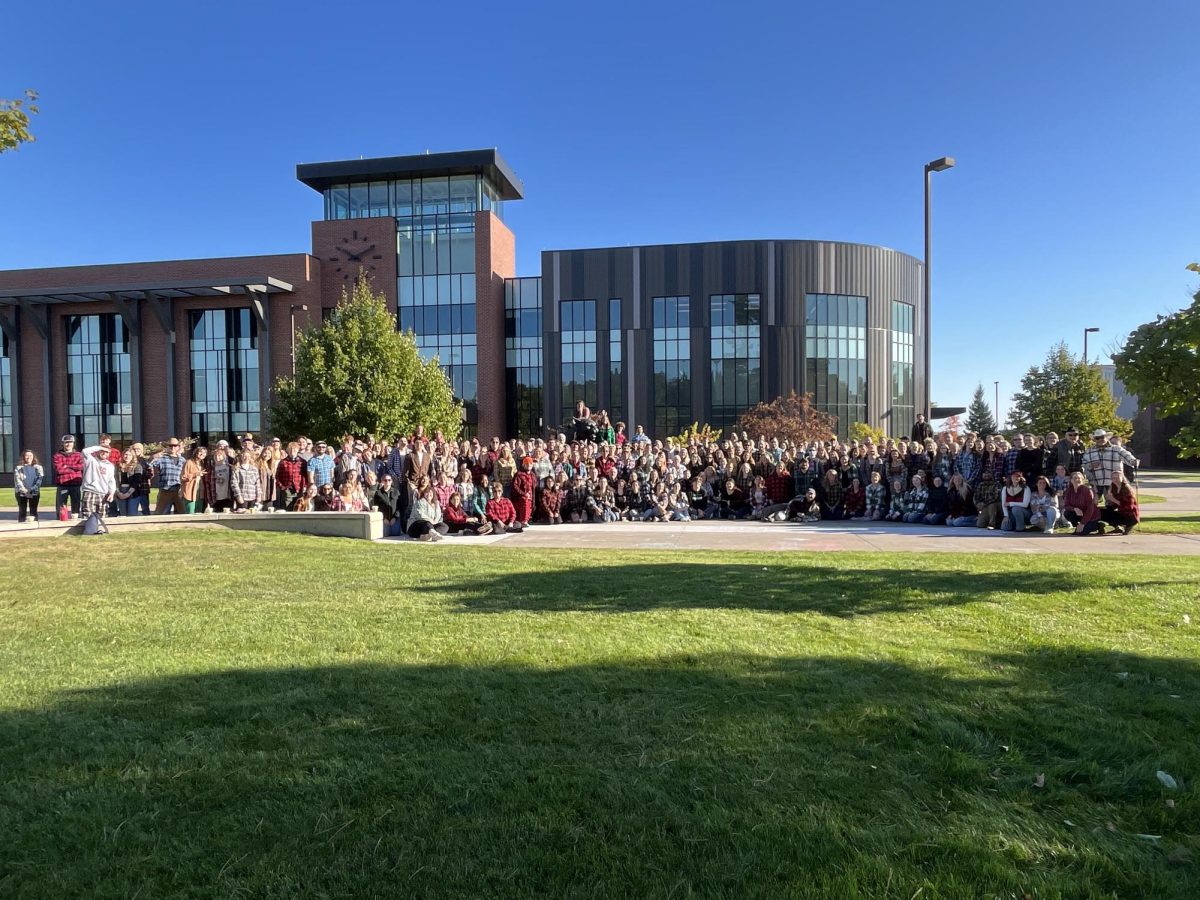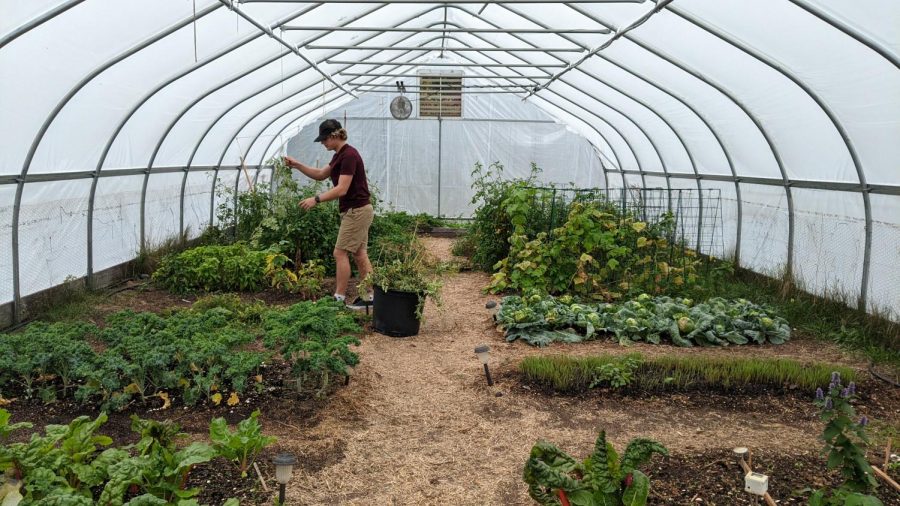Hoop house grows produce for NMU Dining, prepares for winter
Reid Kenyon cleans out a garden bed of watermelon vines to prepare it for a new crop. Kenyon is one of the student volunteers helping keep the hoop house running and growing produce for the community to enjoy.
October 8, 2021
Every Sunday at 6 p.m. Cole Bonino dresses in work clothes and prepares to get her hands dirty while pulling weeds and turning compost. For Bonino and the handful of other students that join her, this gardening is almost like therapy.
“I just really enjoyed growing food, getting my hands dirty, and also sharing that experience with other people and meeting new people,” Bonino said. “It’s a really special place and I kind of fell in love with it.”
Bonino is a senior environmental science major and co-leader of the hoop House student organization along with senior biology major Lovisa Kunkle and sophomore environmental science and French major Mary Kelly.
The hoop house is located by the Jacobetti Complex on Sugarloaf Avenue across from Tourist Park. The hoop house itself is a semi-permanent gardening structure covered in sheets of plastic that raises the temperature and humidity inside to help grow plants in a colder climate.
The hoop house student organization tends the plants inside the hoop house but also has garden beds outside where they grow produce and herbs.
All of their planting, weeding, watering and harvesting is done by student hoop house volunteers. They have work parties every Sunday at 6 p.m. where they take care of the garden beds and then harvest once a week every Tuesday at 10 a.m.
“Most of [the produce] does go to NMU Dining, but I have really been encouraging people to take produce home as a thank you for helping,” Bonino said. “Anyone who helps out or wants to come by and get free produce, they’re welcome to. It’s open to the community.”
Attending the work parties is one of freshman Reid Kenyon’s favorite parts of his week. The hoop house has provided a place for him to connect with the earth and with other people.
“I just think it is a really cool community that we have here and we get to grow and then actually use it in action at the dining hall,” Kenyon said. “It is really cool to see that happen.”
Many of the volunteers that stop by the hoop house also bring with them their knowledge of gardening. However no gardening experience is required to volunteer, and the co-leaders are more than willing to educate interested students on how to create a garden.
“We do also need volunteers. We have got a pretty solid team right now, but for the future, we need volunteers to help water every morning and every afternoon,” Bonino said. “If some people are really interested, we can reserve time to get another group out there. Even if other student organizations or classes want to come out and help out or even just get a tour, we’re open to that as well.”
The hoop house is currently growing tomatoes, peppers, watermelon, kale, strawberries, spinach, lettuce, rhubarb, carrots, squash, asparagus, onions and more. They grow many of their plants from seeds purchased at an organic seed company.
They try and grow many of their starts themselves but if they die before they can be put in the ground, the hoop house will also purchase plants from the farmers market.
Another critical part of the hoop house is their composting system. At the edge of their property are multiple wooden structures where they collect food scraps and organic matter to turn into compost.
“We have a wooden constructed bin … and we’ve got a bunch of red wiggler worms in there,” Kunkle said. “We feed them with food scraps that are donated to us. We water them a few times … and they create a really nutrient-dense, dark dirt compost for us to use on our food beds.”
The compost piles are open to the public and anyone can donate their food scraps to help the hoop house create compost for their garden beds. To learn more about what can and cannot be composted, read our article about composting on campus.
The hoop house student organization is not solely focused on planting and growing produce. They also host educational workshops and plan fun events for their members, such as an open mic night at the hoop house.
“We did a pickling workshop … We used the cucumbers from the garden plot inside that we grew. That was really awesome,” Bonino said. “We’re planning on doing a kimchi workshop with all the cabbage that we have as well.”
Since the hoop house is dependent on the weather and growing seasons, their work and harvest parties will only last as long as the plants can continue growing. Even the inside of the hoop house is too cold to grow anything in the dead of winter.
“We were thinking of starting to close down the hoop house after the first frost which is theoretically I think, Oct. 14,” Kunkle said. “But it’s been so warm … so we might wait a bit longer and see how it goes.”
Eventually, the weather will become too cold to grow anything at the hoop house and the club will move their meetings indoors.
“We’re thinking of growing microgreens and things that can be grown inside so we can continue to like to eat vegetables, and also sell to NMU Dining,” Kunkle said. “We also might bring in speakers or watch documentaries together.”
The hoop house will continue meeting over the winter and start planning for the spring when they can plant again.
In the coming years, they hope to expand their garden to include fruit trees and perennials. They are also planning on including more Native flowers into their pollinator garden.
“One of my goals is to just build it in such a way that it’s going to be maintained, and it’s going to keep growing after we’re gone,” Bonino said. “We are thinking about making posters to educate people on how to compost, how to weed properly without destroying your crops, different ways to keep things going when we’re gone.”

